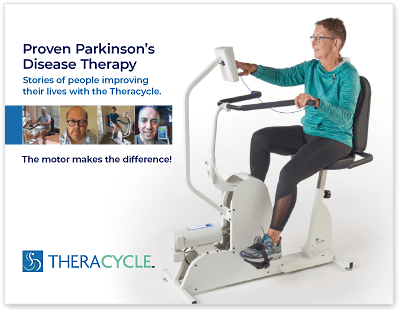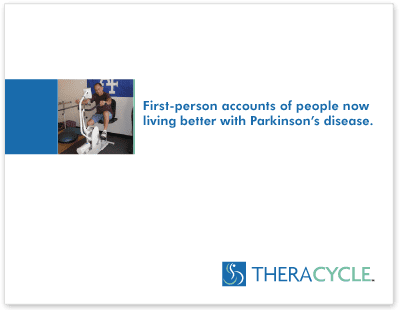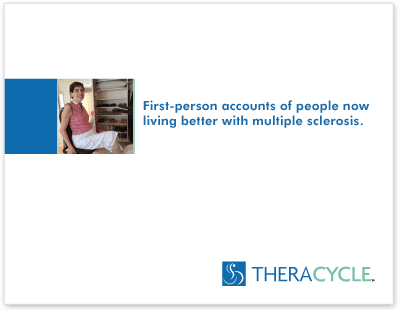- ›
- Stories
- ›
- Parkinson’s Disease
- ›
- Relieving Parkinson’s Symptoms: 3 Ways that Theracycle Helps
Stories
Relieving Parkinson’s Symptoms: 3 Ways that Theracycle Helps

Parkinson’s symptoms start subtly but develop over several years, making it difficult to catch the early signs. If left unchecked, Parkinson’s symptoms can stop a patient from living their fullest life. But with the right Parkinson’s exercise therapy, like the kind of forced exercise the Theracycle offers, you can help your patients reclaim the life that they want to live.
Here’s how the Theracycle forced exercise bike works to relieve Parkinson’s symptoms:
Reduce Tremors
Living with tremors is one of the “most troublesome symptoms” of PD, and affects “About 70% of people with Parkinson’s,” according to Parkinson.org. While medication can help, there are few solutions more effective than Parkinson’s exercises, like the one provided with the Theracycle.
For example, consider this study reported on by the Chicago Tribune, which tells the story of Geoffrey Rogers, a 69-year-old man who experienced a significant reduction in his tremors after a high-intensity workout.
Theracycle’s built-in motor is designed to help the user keep exercising for more extended periods than they would be able to without it. This means that, regardless of the severity of their tremor, a Theracycle user can comfortably and consistently experience the same kind of“high-intensity” workout that Rogers did.
Improve Your Mood
With Parkinson’s, the substantia nigra—neurons in the brain responsible for producing the neurotransmitter dopamine—begin to die off. Without a natural flow of dopamine into a person’s system, motor symptoms can get worse and a person’s general mood and sense of energy will diminish.
While “Levodopa – which works to increase dopamine levels in the brain but cannot rescue damaged neurons – is currently the front-line treatment for the disease,” studies are showing that exercise might be an even better Parkinson’s disease treatment for reducing the degeneration of the substantia nigra.
With the Theracycle, users can take advantage of forced exercise and increase the “brain-derived-neurotrophic-factor (BDNF), which promotes the survival of neurons that make dopamine – the same neurons that degenerate in Parkinson’s patients.” Regular exercise with the Theracycle will boost dopamine production, reduce levels of depression and anxiety, and even help improve the quality of sleep.
Better Balance and Movement
Medical News Today says, “Parkinson’s disease specifically targets nerve cells called basal ganglia, which reside deep within the brain. Basal ganglia nerves control balance and flexibility, so any damage to these nerves can impair a person’s balance.” Parkinson’s symptoms can also involve bradykinesia, which means slowness or absence of movement.
Both of these symptoms can impair a person’s balance and ability to move without difficulty. Again, some medications can help reduce these symptoms, but in terms of improving someone’s quality of life with Parkinson’s, the Theracycle remains one of the most crucial exercises available.
Forced exercise is meant to help patients push themselves—mentally and physically—to do more than they think they’re capable of doing. As a 2009 study discovered, people who engaged in forced exercise showed more improvement in motor function and bimanual dexterity than people who participated in voluntary exercise.
The more someone with Parkinson’s commits to a routine with the Theracycle, the more relief they’ll experience from their symptoms and the more independence they’ll be able to reclaim. There may not be a “cure” for Parkinson’s symptoms, but the Theracycle is designed to make living with those symptoms easier by empowering each user to live their very best life.








